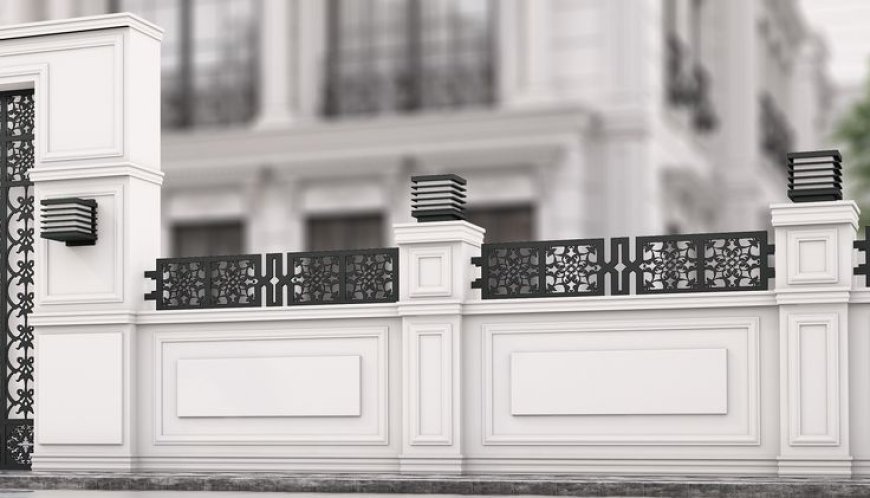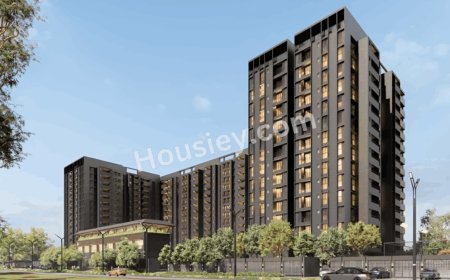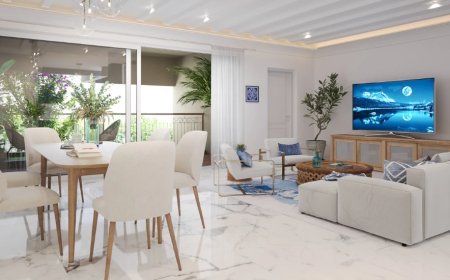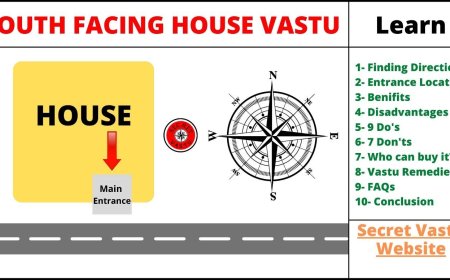Everything You Need to Know About Parapet Walls
Learn about parapet walls, their design, benefits, safety, and more. Understand their role in construction and why they're essential for your building.

Everything You Need to Know About Parapet Walls: Design, Benefits, and Safety
When you think of a building's architecture, parapet walls might not be the first feature that comes to mind. Yet, they play an essential role in both the design and safety of a structure. Parapet walls, typically found at the edges of roofs or balconies, provide more than just a decorative touch. They serve critical functions, from enhancing the aesthetic appeal to ensuring safety and functionality.
In this article, well explore everything you need to know about parapet walls, from their design and materials to their benefits and safety considerations.
What is a Parapet Wall?
A parapet wall is a low wall that extends above the roofline or balcony, typically between 3 to 4 feet in height. It can be constructed from various materials, including brick, concrete, stone, and sometimes even glass or metal. These walls are primarily designed to provide safety, but they also enhance the overall appearance of a building.
While parapet walls are often seen on flat roofs, they are also commonly found on balconies, terraces, and even bridges. Architecturally, parapets have evolved from defensive structures in medieval times to decorative and protective elements in modern construction.
Designing Parapet Walls
When designing parapet walls, several factors need to be considered, such as height, materials, and aesthetic appeal. The design of a parapet wall depends largely on its intended purpose. For instance, a parapet wall on a commercial building may have different specifications than one on a residential property.
Height and Placement
The height of the parapet wall should comply with local building codes and safety regulations. In many cases, parapet walls are designed to be between 3 to 4 feet tall to ensure that they provide adequate protection against falls while not obstructing the view from higher floors.
Materials Used
Parapet walls are built using various materials, including:
-
Brick and Concrete: Durable and sturdy, these materials are commonly used in traditional and modern buildings.
-
Stone: A more decorative option that adds a touch of elegance and can complement the overall architectural style.
-
Metal: Often used for contemporary or industrial-style buildings, metal parapets can be both functional and visually striking.
-
Glass: Glass parapet walls are typically used in high-rise buildings for their aesthetic value and ability to maintain unobstructed views.
The choice of material influences not only the aesthetic but also the structural integrity and cost of the project.
The Benefits of Parapet Walls
Parapet walls offer multiple benefits that make them a valuable feature in modern architecture. Here are some of the key advantages:
1. Safety and Security
The primary function of parapet walls is to provide safety. These walls act as barriers, preventing people from falling off the roof or balcony. For residential buildings, they protect children, pets, and others from accidental falls. On commercial buildings, they offer a layer of security to prevent unauthorized access.
2. Aesthetic Appeal
Parapet walls can significantly enhance the visual appeal of a building. They add a finishing touch to the roofline and can be designed to match the overall style of the structure. Whether its a classic brick parapet or a sleek metal design, these walls contribute to a building's architectural identity.
3. Protection from the Elements
Parapets are excellent at shielding the upper levels of a building from wind, rain, and other environmental factors. They help prevent the erosion of the buildings roof by acting as a barrier to wind-driven rain. Additionally, parapets can protect rooftop equipment like HVAC systems, solar panels, and antennas from the elements, extending their lifespan.
4. Concealment of Roof Features
In addition to enhancing safety and aesthetics, parapet walls can conceal unsightly rooftop elements such as HVAC units, vents, and water tanks. This not only makes the building look more polished but also ensures that these components are protected from harsh weather conditions.
5. Fire Safety
Parapet walls play a vital role in fire prevention. They can act as fire barriers, helping to prevent flames from spreading between different sections of a building. This is particularly important in high-rise buildings, where fire safety measures are crucial for the protection of residents.
Safety Considerations for Parapet Walls
While parapet walls serve as a safety feature, there are several important safety considerations to keep in mind during their design and installation.
1. Structural Integrity
The parapet wall must be securely anchored to the buildings structure to prevent it from being compromised during high winds or seismic activity. Proper engineering is required to ensure the parapets stability, particularly in areas prone to storms or earthquakes.
2. Height and Design Compliance
In some regions, building codes specify the required height for parapet walls. These codes are designed to ensure that the wall is high enough to provide adequate safety without being an obstruction. In many cases, the height requirement is between 3 to 4 feet, but this can vary depending on the location and type of building.
3. Material Durability
The materials used to construct the parapet wall must be durable enough to withstand weather conditions. For example, areas with extreme temperatures or frequent rainfall require parapet walls made from materials like concrete or stone that are resistant to wear and tear. Regular inspections are necessary to ensure the parapet is intact and functioning properly.
4. Maintenance
To keep parapet walls effective, regular maintenance is essential. This includes checking for cracks, chips, or damage that could compromise the walls function. If left untreated, small issues could develop into larger structural problems.
Types of Parapet Walls
Parapet walls come in different types, each suited to specific needs and architectural styles. Here are a few examples:
1. Straight Parapet Walls
These are the most common type of parapet, with a uniform height and design. Straight parapets are ideal for both residential and commercial buildings and are often used in traditional and modern architecture alike.
2. Curved Parapet Walls
Curved parapets are less common but are used to create a more elegant, flowing design. They are typically found in older, classical buildings and are often paired with decorative elements such as arches or domes.
3. Louvered Parapet Walls
Louvered parapets have built-in ventilation, allowing air to pass through. These are often used on commercial buildings or rooftop areas where ventilation is necessary for HVAC systems or other mechanical equipment.
4. Balustrade Parapets
A balustrade parapet is a decorative parapet featuring a row of small posts, or balusters, that create an open, airy effect. This type is often found on balconies and terraces, providing a decorative touch while maintaining visibility.
Conclusion
Parapet walls offer more than just a barrierthey are an essential part of a buildings design, safety, and functionality. Whether you're planning a residential home or a commercial building, incorporating a parapet wall provides valuable benefits such as safety, aesthetic appeal, and protection against the elements.
By carefully selecting the design, materials, and structure, you can enhance the overall look and longevity of your building while ensuring it complies with safety standards and building codes.
When youre planning your next construction project, don't overlook the power of a well-designed parapet wall. Its more than just a decorative featureits a practical, durable, and essential part of modern construction.





























